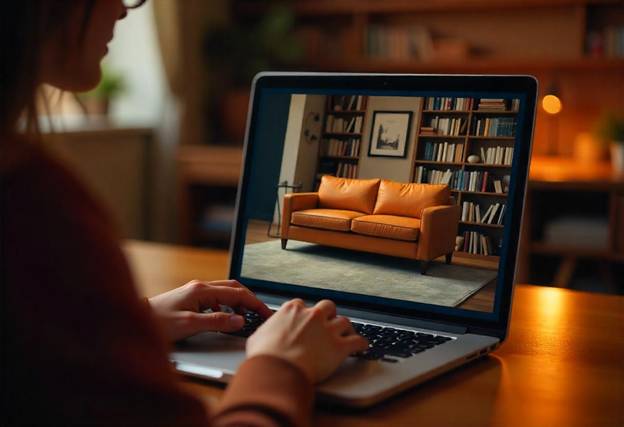
In today’s fast-evolving digital marketplace, 3d ecommerce is emerging as a game-changer, offering businesses a powerful way to boost engagement, reduce returns, and increase sales. Unlike traditional online shopping, where customers rely on flat images and vague product descriptions, 3d ecommerce brings products to life, allowing shoppers to interact with items as if they were holding them in their hands. This immersive experience is transforming how consumers shop online—and businesses that adopt it early are reaping the rewards.
Why 3d ecommerce is the Next Big Thing
The limitations of conventional online shopping are clear: static images don’t convey depth, texture, or scale, leading to uncertainty and higher return rates. 3d ecommerce solves this by letting customers rotate, zoom, and even customize products in real time. For example, a furniture retailer using 3D models can allow shoppers to see how a sofa looks from every angle, change its fabric color, and even visualize it in their living room using augmented reality (AR). This level of interactivity bridges the gap between physical and digital retail, creating a more confident and satisfying buying experience.
According to Shopify, stores using 3D product visuals see a 40% increase in conversions compared to those using standard images. The reason? Shoppers feel more informed and connected to the product, reducing hesitation at checkout.
Key Benefits of 3d ecommerce
- Enhanced Customer Engagement
Interactive 3D models keep users on product pages longer, increasing the likelihood of a purchase. Unlike static images, which shoppers glance at briefly, 3D visuals encourage exploration—whether it’s spinning a watch to see its intricate design or opening a handbag to check its compartments. This deeper engagement builds trust and reduces bounce rates.
- Reduced Return Rates
One of the biggest pain points in ecommerce is returns, often caused by mismatched expectations. With 3d ecommerce, customers get a near-tactile understanding of a product before buying. A study by Threekit found that brands using 3D and AR experiences saw return rates drop by up to 25%, saving millions in logistics and restocking costs.
- Personalization & Customization
From sneakers to luxury cars, 3D configurators let buyers personalize products in real time. Nike, for instance, uses 3D previews to showcase custom color options for shoes, while automotive brands like BMW allow customers to build their dream car online. This not only enhances the shopping experience but also creates an emotional connection, making customers more likely to complete their purchase.
- Seamless AR Integration
Many 3d ecommerce platforms integrate with AR, enabling shoppers to “place” virtual products in their real-world environment. IKEA’s AR app, for example, lets users see how a piece of furniture fits in their home before buying. This eliminates guesswork and boosts confidence—especially for big-ticket items.
Industries Leading the 3d ecommerce Revolution
While 3d ecommerce is beneficial across sectors, some industries are adopting it faster than others:
- Fashion & Apparel: Virtual try-ons for glasses, watches, and clothing reduce sizing doubts.
- Furniture & Home Decor: AR-powered room visualization helps buyers avoid costly mistakes.
- Jewelry & Luxury Goods: 3D zoom reveals intricate craftsmanship that photos can’t capture.
- Automotive: Custom car builds with real-time 3D renders enhance the buying journey.
Challenges and Considerations
Despite its advantages, implementing 3d ecommerce isn’t without hurdles:
- Cost & Development Time: High-quality 3D models require investment in software and skilled designers.
- Technical Limitations: Not all ecommerce platforms support 3D natively, requiring plugins or custom solutions.
- Mobile Performance: Heavy 3D files can slow down load times on smartphones if not optimized properly.
However, as technology advances, tools like WebGL and 3D-commerce plugins are making integration easier and more affordable for businesses of all sizes.
The Future: Where 3d ecommerce is Headed
As virtual and augmented reality become mainstream, 3d ecommerce will evolve beyond product previews into full virtual stores. Imagine walking through a digital showroom, interacting with lifelike products, and even chatting with a virtual sales assistant—all from your phone. Meta (formerly Facebook) and other tech giants are already investing heavily in the “metaverse,” where 3D shopping experiences will dominate.
Moreover, AI-powered 3D scanning is making it easier for brands to convert physical products into digital models quickly. Soon, even small businesses will be able to offer immersive shopping without a hefty budget.
Final Thoughts
The shift to 3d ecommerce isn’t just a trend—it’s the future of online retail. By providing richer, more interactive experiences, businesses can differentiate themselves, build stronger customer relationships, and drive higher sales. Early adopters are already seeing the benefits, and as consumer expectations grow, 3D shopping will become the new standard.
For brands looking to stay ahead, now is the time to explore 3D product visualization. Whether through AR try-ons, configurable 3D models, or virtual showrooms, the opportunities are limitless. The question isn’t if you should adopt 3d ecommerce—it’s how soon you can implement it.





